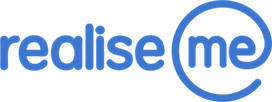Martine Ellis hosts a popular education podcast called The Teaching Space. She is also a teacher educator and Google Certified Trainer based in Guernsey. This blog is a chapter from her latest book, The Productive Teacher.
Marking, or grading (depending where in the world you are) is the bane of the vast majority of teachers’ lives. Have you ever thought about why?
Why is Marking Such a Problem?
It’s a simple case of too much to do and not enough time. When you calculate your contracted hours of work, minus your contact time (time in the classroom), divided by the number of days a week you work… what you get is surprising. It’s a very small amount of time per day to do work outside of the classroom.
Of course, that time gets absorbed by meetings, chats with learners, parents, colleagues and many other duties that might or might not be on your job description.
The repetitive nature of marking can make it seem like it takes longer than it needs to.
Do you see the problem? In this chapter we will look at ways to minimise and streamline the marking process.
What Should You Mark?
Are you making too much work for yourself? How many marked pieces of work is it necessary for your learners to produce per week? If it is two, why are you getting them to produce five?
Surely giving learners the opportunity to complete two detailed, slightly longer assessed pieces of work instead of five short ones will give you a far better understanding of their progress.
Revise how much assessed work you need to issue. Focus on quality over quantity.
Peer and Self Assessment
An effective way to ensure the work you receive to mark is the best quality it can be, is to use peer and self assessment. Sometimes peer assessment might not be appropriate due to the type of assessment being undertaken. However, self assessment is always appropriate.
Could you perhaps create a checklist outlining the assessment criteria as questions, using language appropriate to your learners? Before your learners hand in their work for marking, they should complete the checklist. This works for peer assessment too.
Peer assessment can be a very powerful tool which empowers learners. Sometimes learners receive feedback on their work better from a peer than they would from a teacher.
Ultimately, by helping learners understand the assessment process better, you are giving them a far better chance of success (as well as lightening your marking workload). Assessment will feel like a process they are very much a part of as opposed to something that is done to them.
Templates
If your main summative assessment method is assignments, then creating assignment templates can streamline the marking workflow.
For some learners, knowing how to set out the assignment, as well as what the questions mean, is the biggest hurdle. If this part of the assignment is not in your assessment criteria, then a template to help learners lay out and break down the question can be helpful for all parties.
This is even more relevant if you use Google Classroom – you can issue a Google Docs assignment template per student. Then, when the assignment is complete, the learner can ‘turn in’ their work by clicking the turn in button in the document.
Let Tech Help
Expanding the concept of using templates via Google Docs and Classroom for assignments, there are a variety of ways you can streamline giving feedback comments if you are working digitally.
These techniques apply to Google Docs; however, there are ways to adapt them for other platforms too. You can set up your own feedback related keyboard shortcuts in Google Docs under TOOLS > PREFERENCES.
For example, if you are marking assignments and regularly find yourself typing the comment ‘grammar error, please check this apostrophe’ you could create a keyboard shortcut for this (perhaps #ap). Note that putting # in front of your shortcut is helpful because it distinguishes it as a feedback shortcut. This is personal choice though.
These keyboard shortcuts are extremely useful, but there is a downside to them. You must use your shortcuts in the main body of text. This means you are typing in learners’ assignments and your comments could be easy to miss. Surrounding the expanded comment with hashtags or asterisks for example (# like this # or * like this *) could help the comment stand out.
Alternatively, you could operate in suggesting mode in Google Docs, so the comment produces a bubble comment at the side of your learners’ work. This is a nice hack, but when the learner makes the relevant change, they need to decline the suggestion to remove it from the work. When you check your learner has made all of the changes you suggested, it’s time consuming to recall the comments and see if this has been done.
My preference is to use the comment bank built in to Google Classroom. It takes a little time to set up, but it’s worth it. The comment bank is a relatively new addition to Google Classroom. Before this, I made my own comment bank in Google Keep.
Marking Codes
If this all sounds a little technical and you prefer a simpler method of streamlined marking, then perhaps consider using marking codes.
Identify the comments you repeat regularly then give the comment a code and create a key. This works well regardless of whether you are marking digitally or by hand. For example, ‘this section was well done’ could be ‘WD’.
You will need to ensure your learners have your code key when they are receiving their feedback. After a while, they will learn your key.
Rubrics
Rubrics are another way to streamline digital and physical marking.
A rubric is a tool to help teachers assess learners’ work. Typically, it will be in a table format with assessment criteria and success level definitions. For example, a rubric might include five specific criteria, and then a definition relating to each criterion corresponding with what makes work excellent, good or needs more work.
Rubrics create consistency in your marking and speed things up too as you need not rely on your memory. You can take things a step further and combine rubrics with marking codes.
Another advantage of using rubrics is that, if you are making use of peer and self assessment to streamline and speed up your marking, they create a good framework. If your rubrics are written in a way your learners can understand then they can be the framework for peer and self assessment. It’s essential that, if you are doing this, you spend plenty of time explaining the rubric to your learners. Perhaps use a sample assignment submission and mark it using a rubric as a group activity.
Batch Marking
According to business productivity expert, Michael Hyatt, batching, or batch processing is the grouping of similar tasks that require similar resources to streamline their completion. You probably batch tasks already. For example, when cleaning or making freezer meals. Marking is the perfect task to batch.
But why is batching a good idea? Batching is the extreme opposite of multitasking. To understand why batching works, it’s worth remembering why multitasking doesn’t.
Multitasking, or more accurately, task switching, is not a productive way to work. Our brains are simply not wired to multitask and need to focus on one thing at a time. Every time you are distracted by another task (the task switch) it takes time and energy. Doing this constantly will drain you and stress you out.
Focussing on one task means you are not task switching and allows you to get into a state of flow. Flow is an amazing state to be in because you work better and faster.
When marking, you can take flow even further by refining how you approach your marking. For example, if you have a pile of 30 exams to mark, do page one of each exam first, then page two. This speeds things up because after the first few page ones you will have memorised the answers and things will speed up dramatically.
To find out more about The Productive Teacher book visit theproductiveteacherbook.com.










